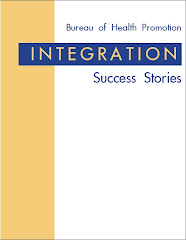The Utah Cancer Control Program (UCCP), Tobacco Prevention and Control Program (TPCP), Healthy Utah, and Diabetes Prevention and Control Program (DPCP) integrated to present the value of using Social Networks as a medium for health promotion. They co-presented at the Utah Council for Worksite Health Promotion conference in October. During the panel discussion each program shared their experience with utilizing social networks and answered attendee questions.
Whitney Johnson shared UCCP’s success with utilizing blogs to promote Cervical Cancer Prevention and encourage individuals to share their stories by creating a posting on their personal blog and/or Twitter account and entering it into the UCCP’s Cervical Cancer Prevention Contest.
Kelli Bradshaw shared Healthy Utah’s use of Facebook and Twitter to reach members, promote the program events, send health related information, and encourage discussion. Facebook has been a great avenue to connect with Healthy Utah members throughout the state.
David Neville shared the TPCP's success with their “Text2Quit” campaign which utilized text messaging to send daily tips to help get Utahns through the quitting process. For the TPCP, texting was a great resource to support smoking cessation in a convenient way that took into account people’s busy lives.
Grant Sunada shared DPCP's use of Twitter to not only distribute information but also as a tool to stay connected and see what people are saying regarding diabetes. The program has also utilized this as an opportunity to connect people to available resources.











